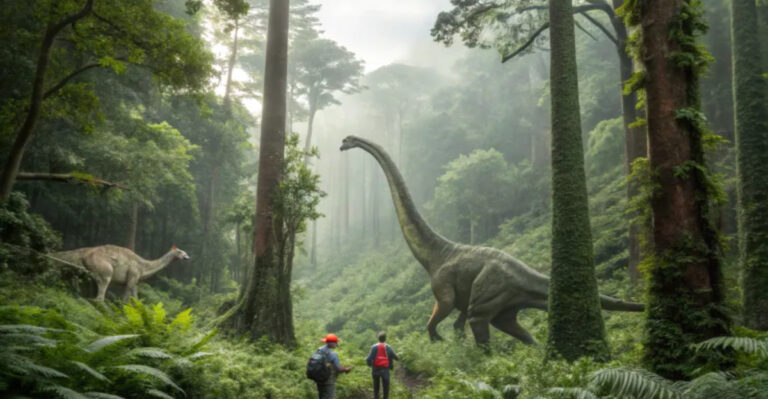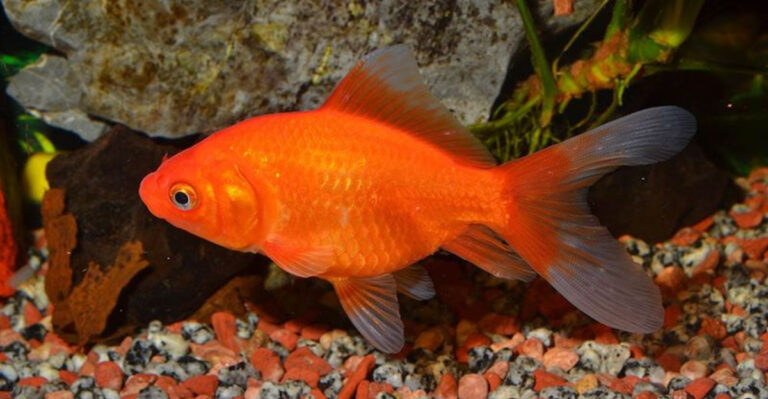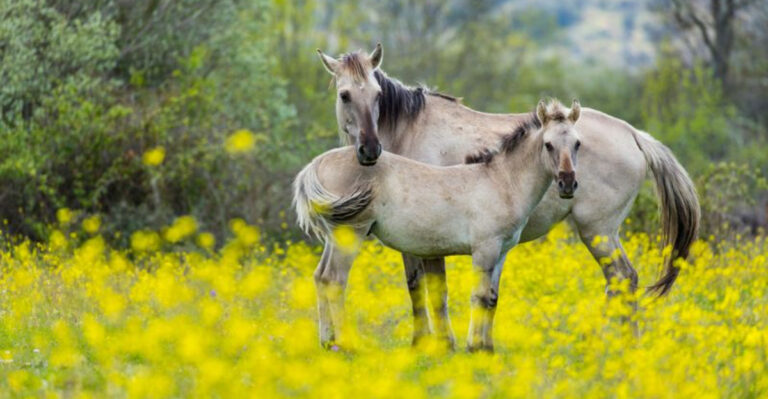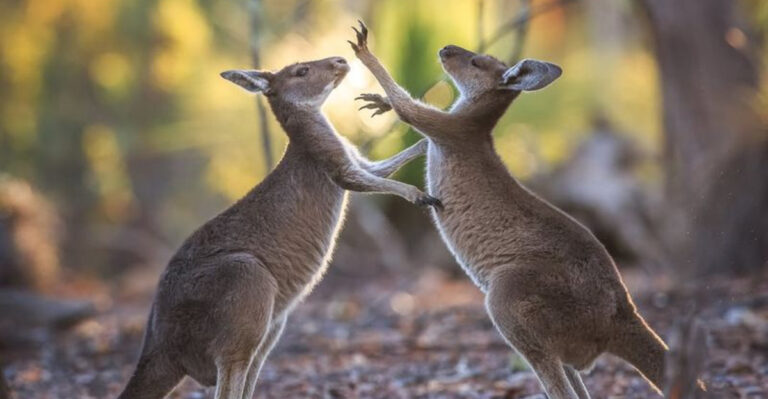27 Remarkable Animal Species Found In Cambodia’s Mangroves
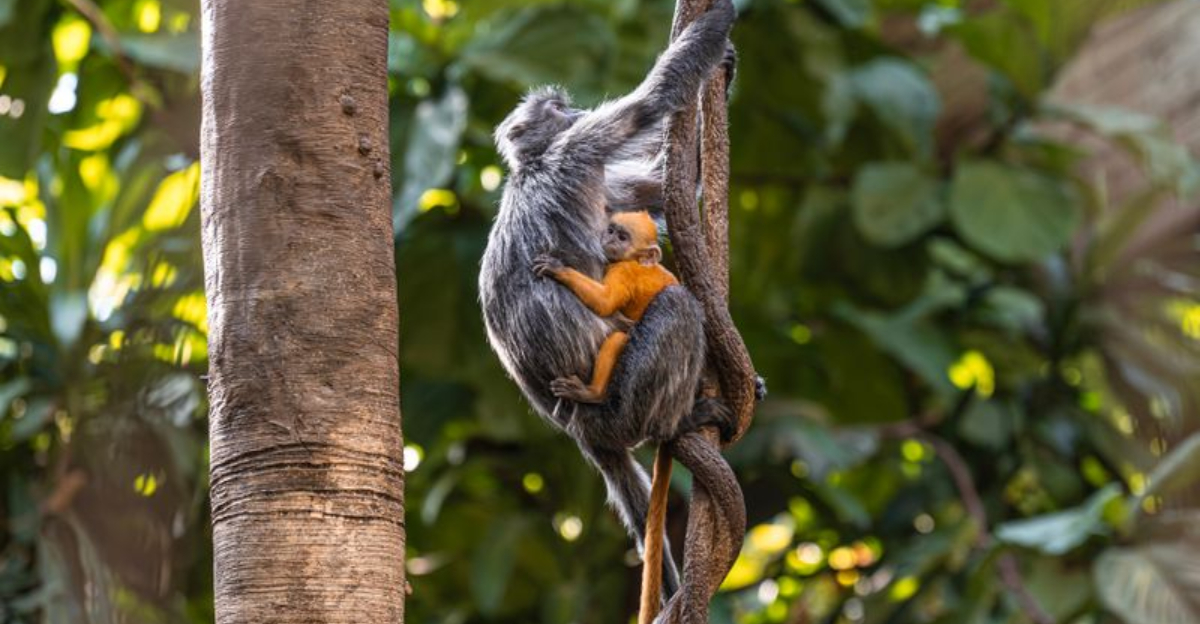
Cambodia’s mangroves are a treasure trove of biodiversity, hosting a myriad of unique and remarkable animal species.
These ecosystems provide critical habitats for a wide array of wildlife, each species playing a vital role in maintaining ecological balance.
In this list, we’ll embark on an exploration of fascinating animal species found in these mangroves.
1. Fishing Cat
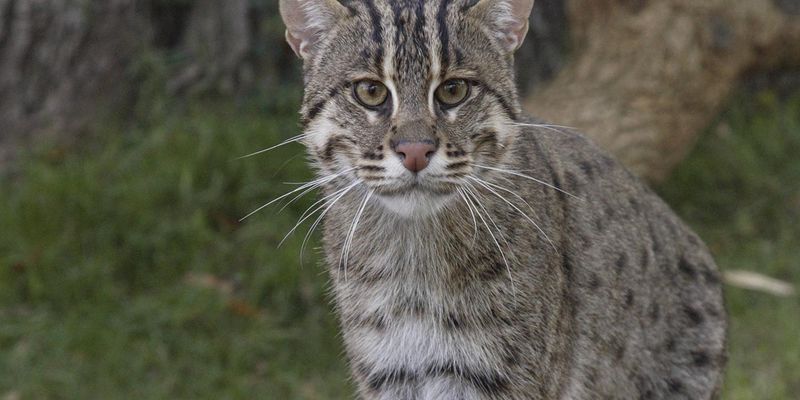
Swimming gracefully through the mangroves, the fishing cat is an aquatic marvel.
With webbed feet that make it an adept swimmer, this feline is a true fish hunter. Its sharp, partially retractable claws are perfect for catching slippery prey.
In the dense mangrove environment, the fishing cat’s unique adaptations are a testament to nature’s ingenuity.
Its camouflage helps it blend seamlessly into the surroundings, making it a stealthy predator. This elusive cat is a vital part of the ecosystem, controlling fish populations.
2. Irrawaddy Dolphin
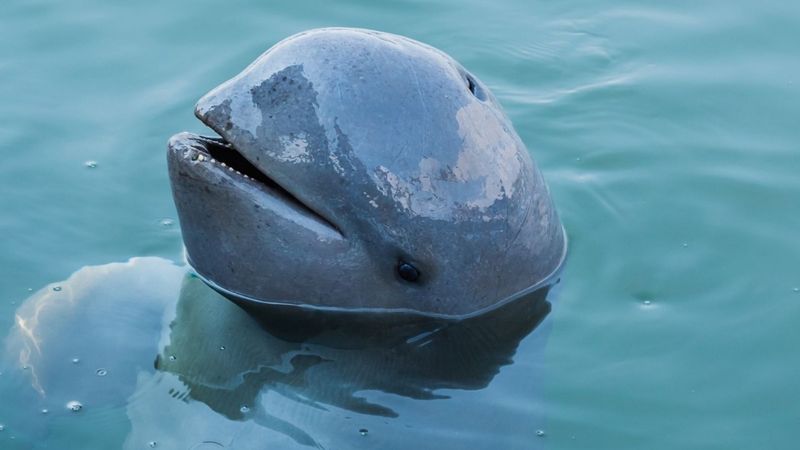
Gliding with elegance, the Irrawaddy dolphin stands out with its unique round forehead.
Unlike its ocean-dwelling cousins, this dolphin thrives in coastal and freshwater regions. It’s a social creature, often seen in groups, exhibiting playful behaviors.
The mangroves serve as a crucial habitat, offering protection and abundant food sources.
These dolphins play a significant role in the ecosystem by helping maintain the balance of aquatic life. Observing their interactions is akin to watching a well-rehearsed ballet in the wild.
3. Smooth-Coated Otter
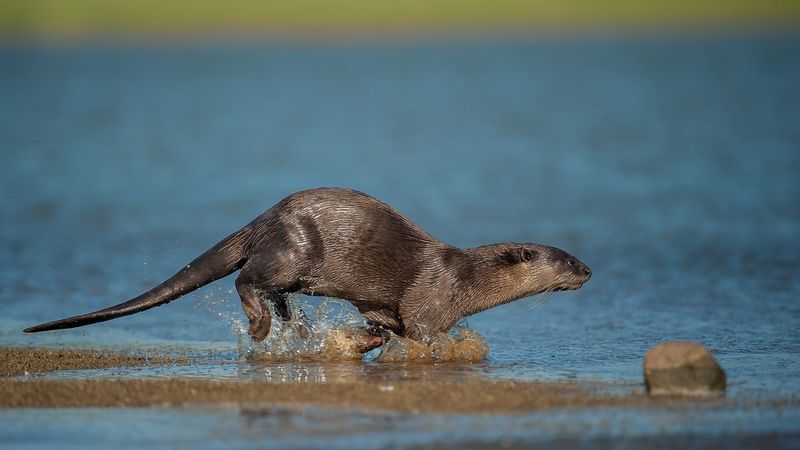
Bounding through the water with unbridled joy, the smooth-coated otter is a social butterfly of the mangroves.
Its sleek, glossy fur is perfectly adapted for an aquatic lifestyle, allowing it to glide effortlessly through the water.
This otter species thrives on cooperation, often found in groups that work together.
Their playful nature is not just for fun; it strengthens social bonds and teaches young otters crucial survival skills. They play a pivotal role in maintaining the ecological balance, keeping fish populations in check.
4. Hairy-Nosed Otter
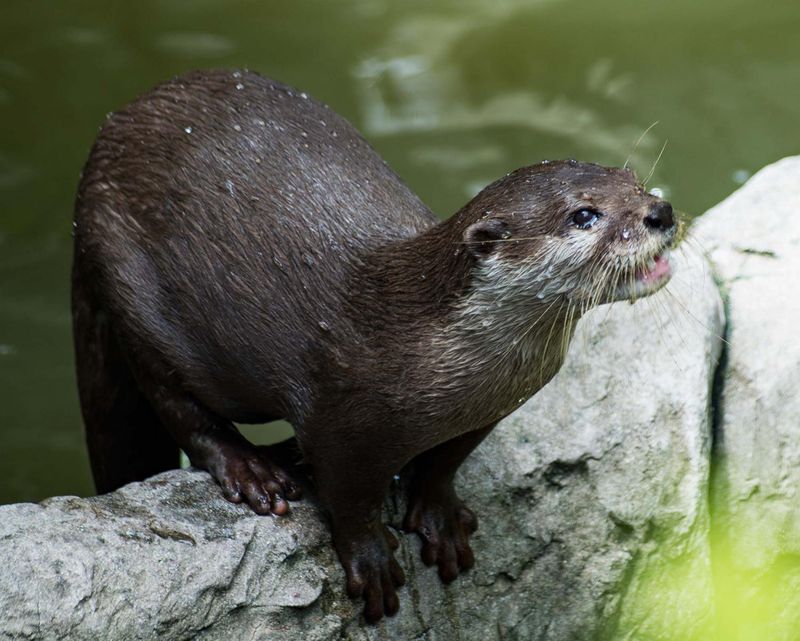
Navigating the intricate waterways of the mangroves, the hairy-nosed otter is a rare gem. Its distinctive nose and agile swimming skills make it an adept predator of these waters.
The mangroves provide an ideal habitat, offering shelter and abundant food sources. This otter’s presence is a marker of a healthy ecosystem.
As it glides through the water, it contributes to the ecological balance by preying on fish and other aquatic creatures, ensuring the vitality of its home.
5. Sunda Pangolin
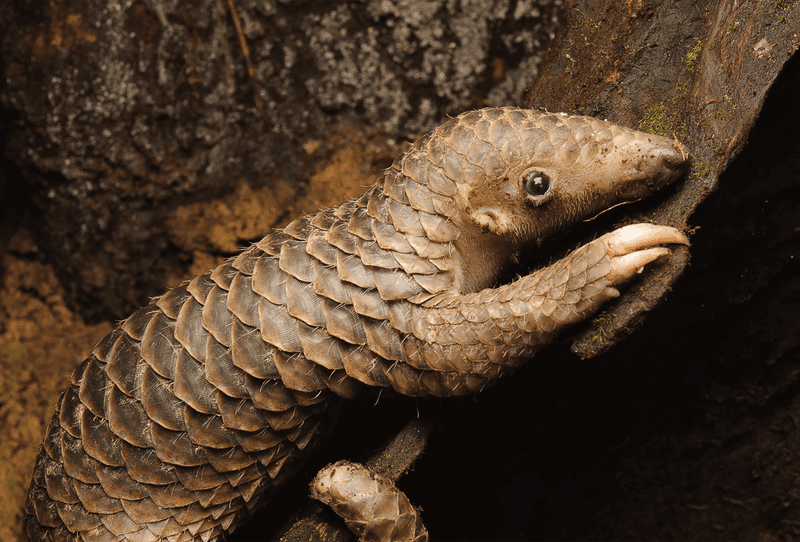
With a suit of armor made of scales, the Sunda pangolin is a fascinating inhabitant of the mangroves. This critically endangered species plays a crucial role in pest control, feeding primarily on ants and termites.
Its unique defense mechanism, curling into a ball when threatened, is both effective and endearing. The mangroves provide a safe haven for this timid creature, offering both food and shelter.
Conservation of its habitat is vital for the survival of this incredible species, which is often targeted by poachers.
6. Mangrove Skink
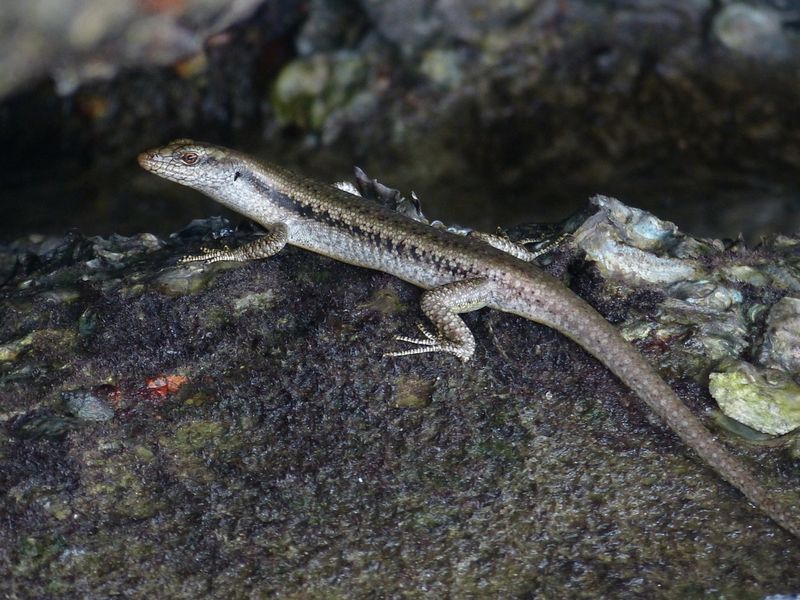
In the dappled sunlight filtering through the mangrove canopy, the mangrove skink basks serenely.
This small reptile is an efficient controller of pest populations, feeding on insects that thrive in the warm, humid environment.
Its agility and keen senses make it a skilled hunter, adept at navigating the complex mangrove root systems.
The skink’s adaptability is key to its survival, allowing it to thrive in challenging conditions. Its presence highlights the intricate web of life that sustains the mangrove ecosystem.
7. Mangrove Pit Viper
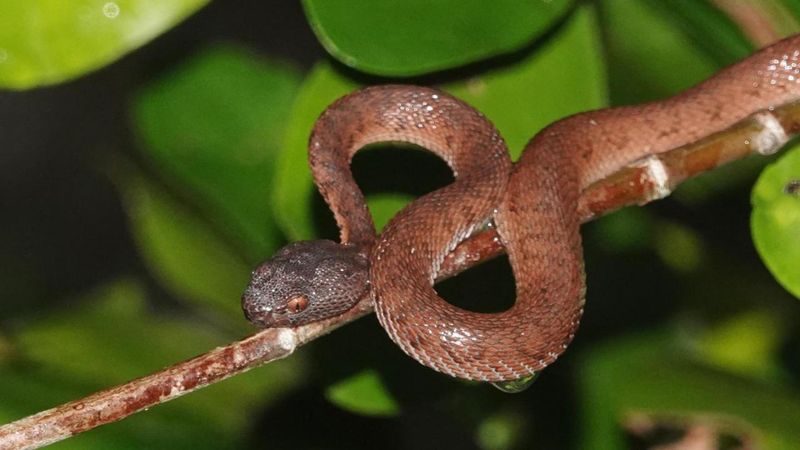
Lying in wait with a patience that only nature can bestow, the mangrove pit viper is a master of ambush. Its striking coloration serves as both a warning and a means of camouflage among the mangrove foliage.
Equipped with heat-sensing pits, it detects the slightest movements of its prey.
This venomous snake plays a balancing role, controlling populations of small vertebrates. Its presence is a testament to the diversity of life that thrives in Cambodia’s mangrove forests.
8. Long-Tailed Macaque
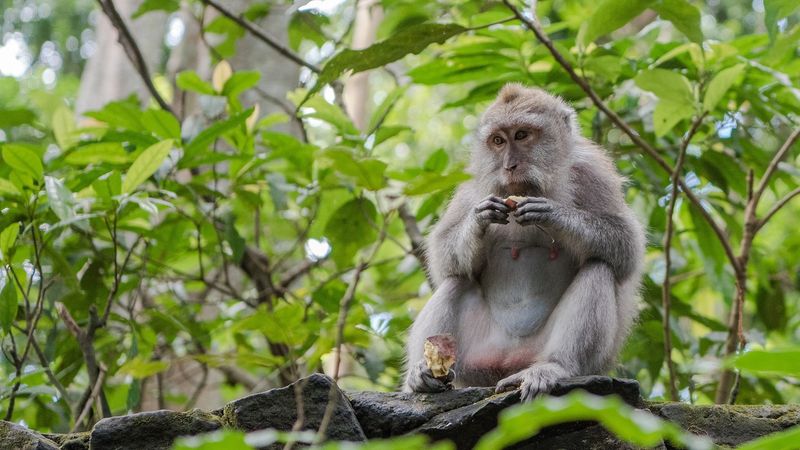
Swinging playfully through the branches, the long-tailed macaque adds a lively rhythm to the mangrove melody.
Known for their curiosity and intelligence, these primates are adept at adapting to various environments.
Living in large groups, they play a crucial role in seed dispersal, aiding in the regeneration of mangrove forests.
The macaques are a joy to observe, their antics providing endless entertainment. Their interactions with the environment highlight the delicate balance within these ecosystems.
9. Crab-Eating Frog
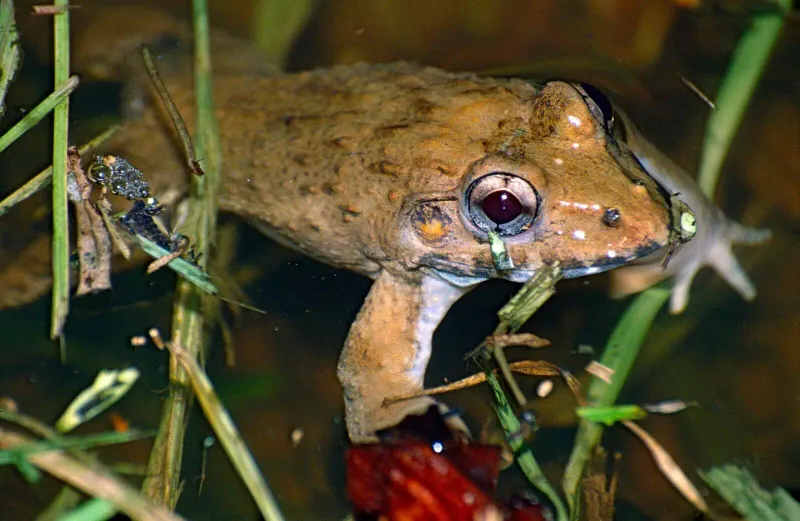
Blurring the line between land and water, the crab-eating frog thrives in the brackish waters of the mangroves.
With a diet rich in small crabs and invertebrates, it plays a significant role in controlling these populations.
Its ability to live both in water and on land makes it an adaptable survivor in the shifting tides of the mangroves.
This frog’s presence signifies a healthy, functioning ecosystem where amphibians contribute to the intricate balance of life.
10. Saltwater Crocodile
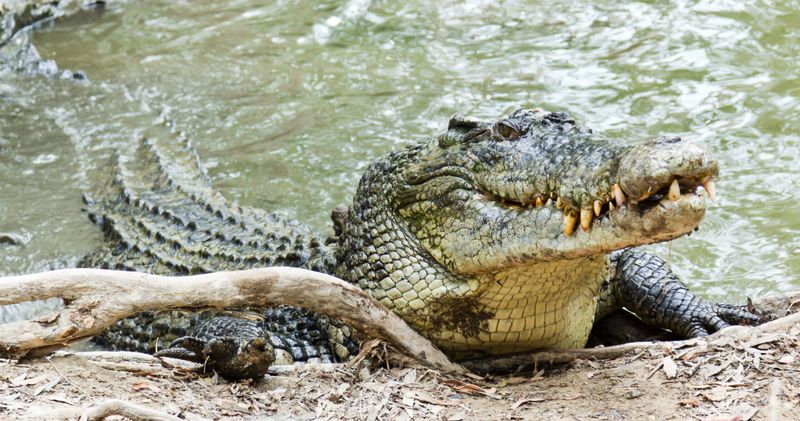
Dominating the mangrove waterways with formidable grace, the saltwater crocodile is a top predator. Its stealth and power make it a master hunter, maintaining the balance of the food chain.
Despite their fearsome reputation, these crocodiles play a vital role in their ecosystem. By preying on a variety of species, they help regulate populations, ensuring no single species dominates.
Respecting their presence is key to understanding the intricate mosaic of life within the mangroves.
11. Mangrove Monitor
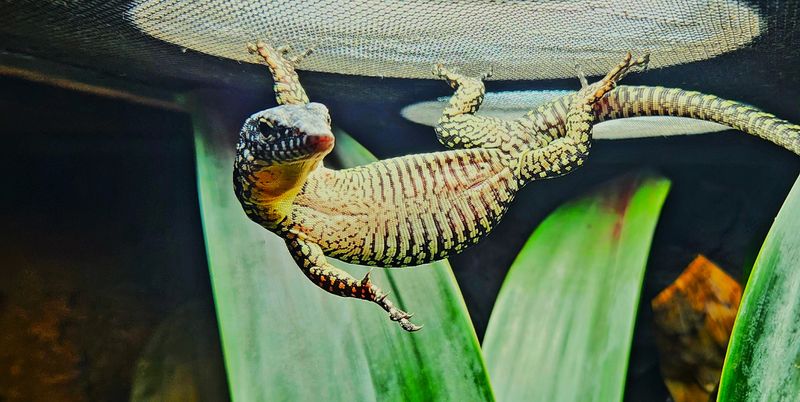
Climbing with the agility of an acrobat, the mangrove monitor lizard is a sight to behold. This large reptile is a skilled hunter, preying on small vertebrates and contributing to ecosystem balance.
Its non-venomous nature makes it less threatening to humans but no less impressive. The monitor’s role in the mangrove ecosystem is crucial, as it helps control prey populations.
Observing this lizard in its natural habitat is a testament to the diverse and dynamic life forms that thrive here.
12. Water Monitor Lizard
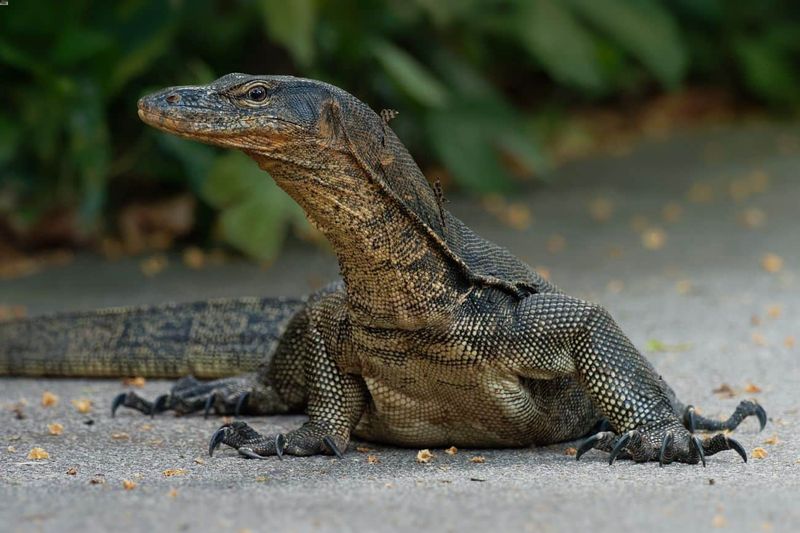
Navigating both land and water with equal prowess, the water monitor lizard is a formidable presence in the mangroves.
Its sleek body and keen senses make it an adept predator, controlling populations of various prey.
This lizard’s role in the ecosystem is crucial, as it maintains the balance of life by keeping prey populations in check.
Its ability to thrive in such a diverse environment speaks to its adaptability and the rich biodiversity of the mangrove ecosystem.
13. Lesser Adjutant Stork
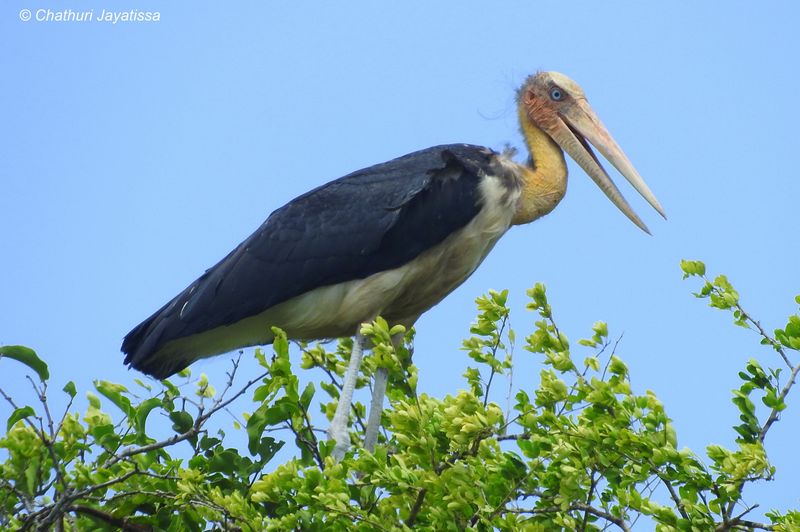
Strutting through the mangroves with an air of authority, the lesser adjutant stork is a striking bird. Its bald head and long legs make it stand out as it wades through the water in search of food.
Feeding on fish, frogs, and small mammals, this stork plays a role in controlling these populations. Its presence adds to the vibrant tapestry of life that makes up the mangrove ecosystem.
Observing this bird offers a glimpse into the complex web of interactions that define these habitats.
14. Scaly-Breasted Munia
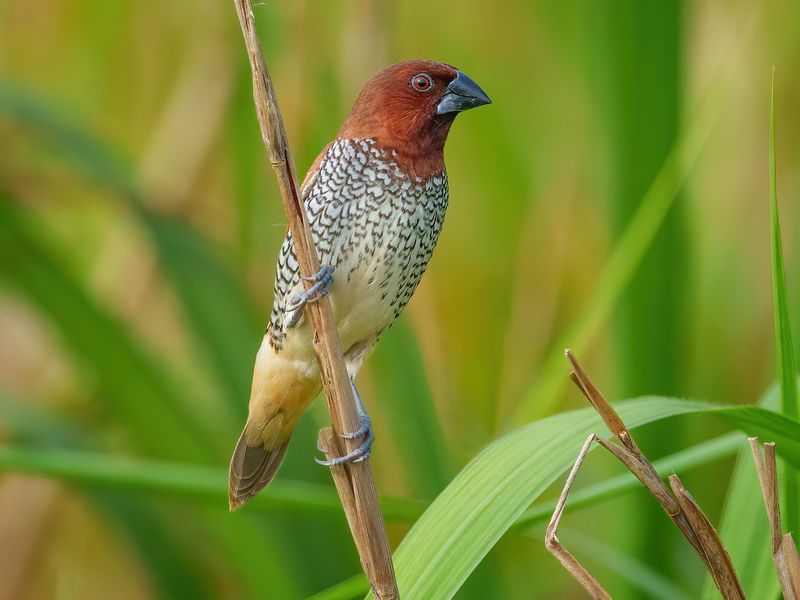
Perched in the branches, the scaly-breasted munia adds a touch of elegance to the mangroves. Known for its scaly-patterned breast feathers, this small bird is a social creature, often seen in flocks.
Its diet primarily consists of seeds, contributing to seed dispersal and pest control.
The munia’s presence is a reminder of the interconnectedness of life within the mangroves. Its role may seem small, but it is vital in maintaining the balance and health of the ecosystem.
15. Black-Capped Kingfisher
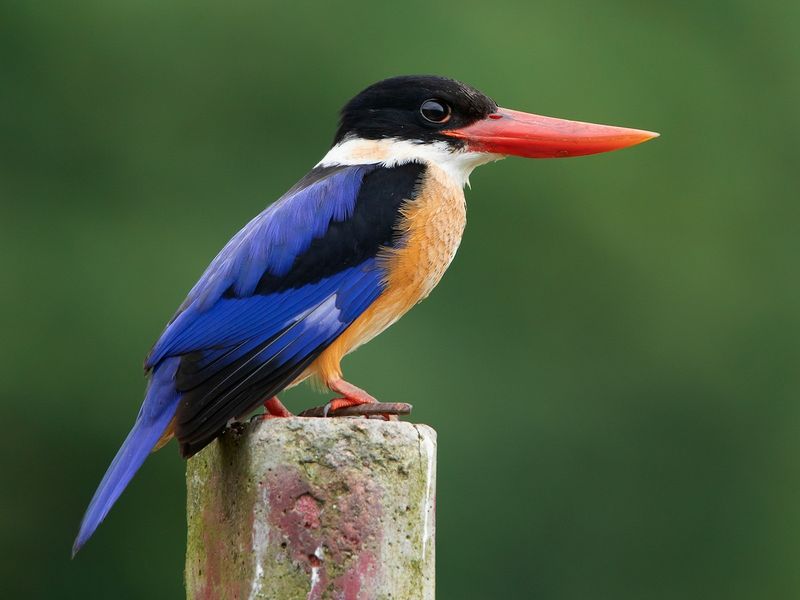
A flash of blue and orange, the black-capped kingfisher is a vibrant jewel of the mangroves. With a keen eye for spotting fish and small crustaceans, it is a master of the dive.
This bird’s striking appearance is matched by its remarkable hunting skills, playing a role in controlling aquatic prey populations.
Its presence is a testament to the rich diversity and vibrant life that thrives in Cambodia’s mangrove ecosystems. Observing this kingfisher is a visual delight for any bird enthusiast.
16. Collared Kingfisher
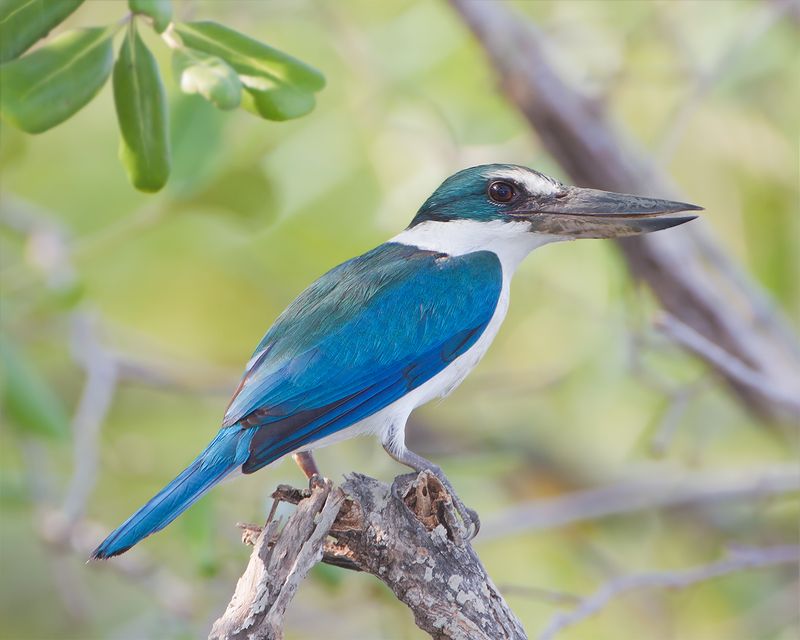
Perched with precision, the collared kingfisher is an expert fisherman.
Its vibrant plumage and sharp gaze make it a standout in the mangroves. With skillful dives, it captures fish and crustaceans, contributing to the control of aquatic prey populations.
The collared kingfisher’s role is crucial in maintaining the ecological balance of its home.
Its presence is a vibrant splash of color amid the greenery, highlighting the dynamic interplay of life within the mangrove ecosystem.
17. Common Redshank
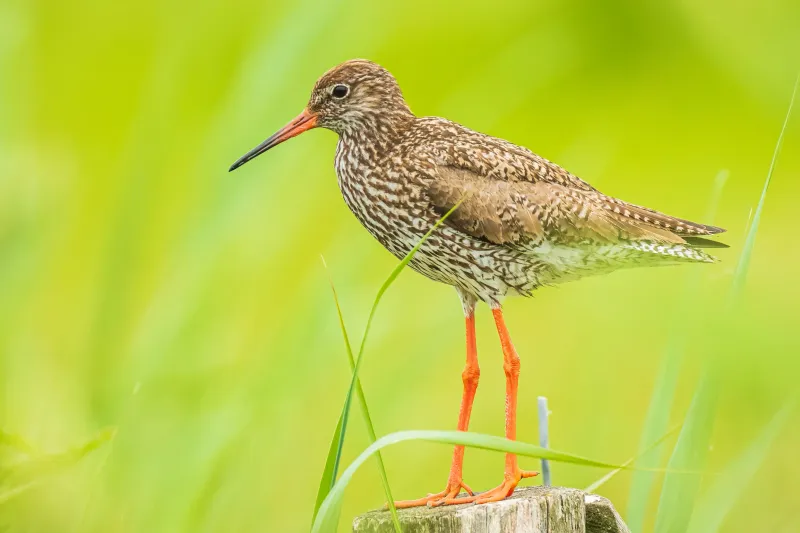
With its striking red legs, the common redshank wades gracefully through the shallow waters. This wader bird plays a vital role in nutrient cycling within the mangrove ecosystem.
Feeding on invertebrates, the redshank helps control their populations, preventing any single species from overwhelming the ecosystem.
Its interactions with the environment highlight the intricate balance and the importance of every creature in maintaining a healthy mangrove habitat.
Observing this bird offers insight into the delicate dance of life in the mangroves.
18. Mangrove Whistler
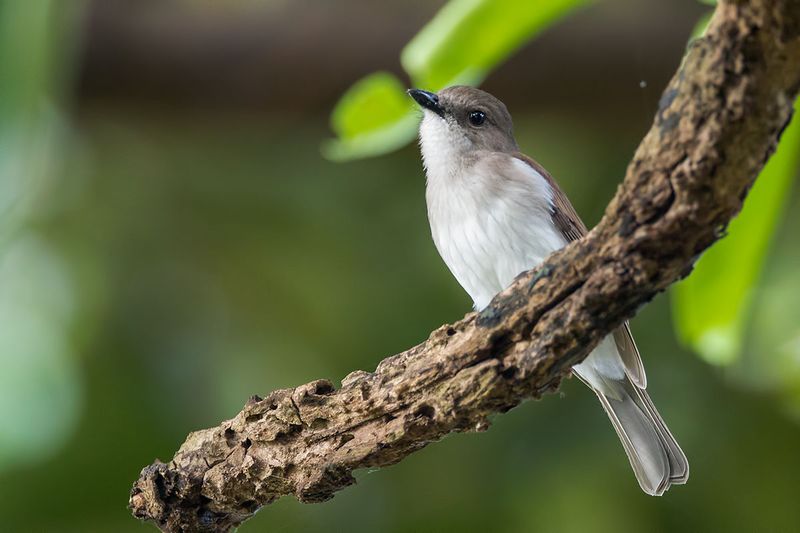
The air of the mangroves is filled with the melodious calls of the mangrove whistler. This small songbird is not just a joy to listen to; it plays an important role in pest control.
By feeding on insects, the whistler contributes to maintaining the balance of the ecosystem. Its presence is a reminder of the beauty and complexity of life within the mangroves.
The whistler’s song is a soothing soundtrack to the vibrant life around it, adding to the sense of harmony and balance.
19. Mangrove Pitta
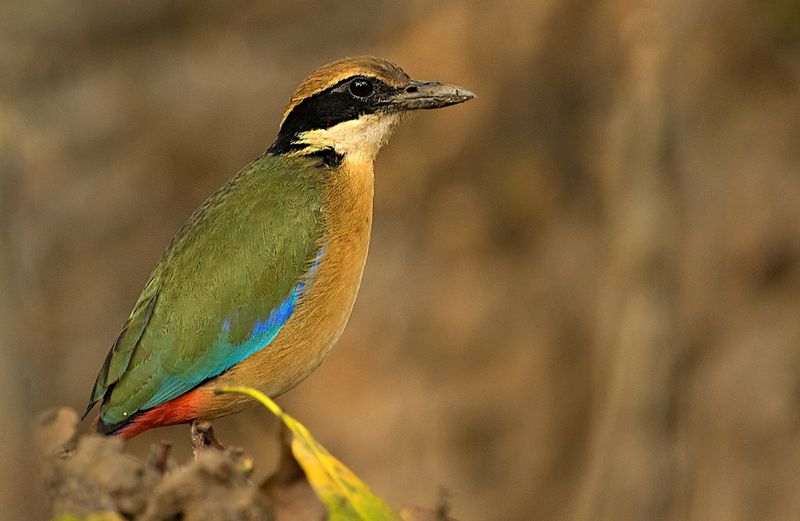
Hidden among the dense foliage, the mangrove pitta is a shy yet colorful resident of the mangroves. Its vibrant plumage is a visual delight, while its role in controlling insect populations is crucial.
This bird’s presence is a testament to the rich diversity of life that thrives in the mangrove ecosystem.
The pitta’s elusive nature makes it a fascinating subject for bird watchers and a testament to the hidden wonders within these rich habitats.
20. Asian Dowitcher
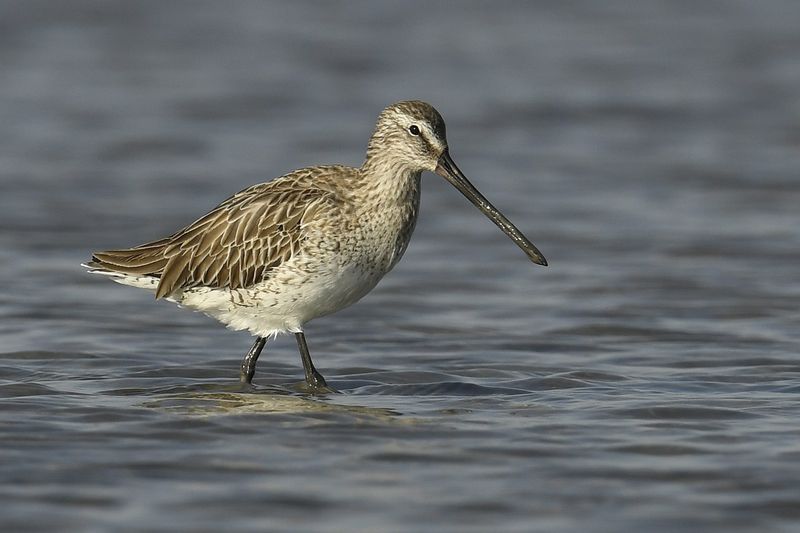
Probing the mudflats with precision, the Asian dowitcher is an expert in its feeding technique. As a migratory shorebird, it plays a vital role in nutrient cycling within the mangrove ecosystem.
Its distinctive long bill is perfectly adapted for finding invertebrates hidden in the mud. The dowitcher’s presence is a marker of healthy mangrove habitats, as it relies on these rich feeding grounds during its migration.
Observing this bird offers a glimpse into the complex interactions of life in these unique ecosystems.
21. Eurasian Curlew
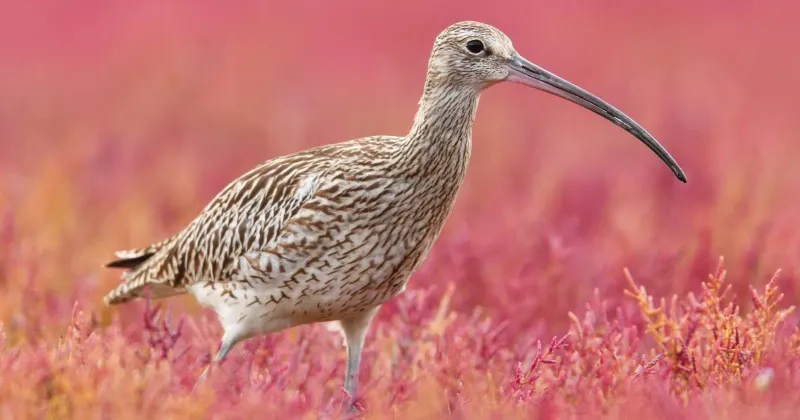
With its elegant curved bill, the Eurasian curlew is a master forager in the mudflats. This wader bird plays a significant role in maintaining ecological balance by feeding on invertebrates and small aquatic creatures.
The curlew’s presence is a sign of a thriving ecosystem, as it requires healthy mangrove environments for foraging.
Its interactions with the environment highlight the interconnectedness of life in the mangroves, where each species contributes to the overall health and balance of the habitat.
22. Whimbrel
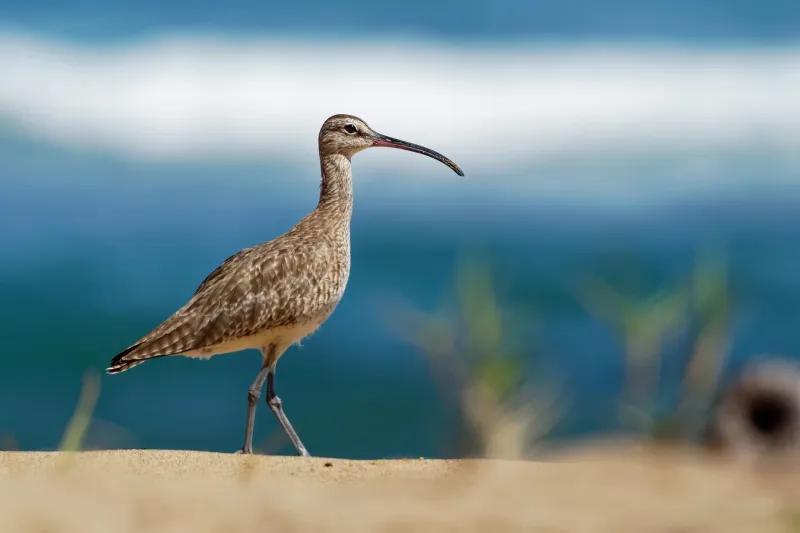
With a long, curved bill, the whimbrel is a master forager in the mud and sand. This migratory bird is skilled at finding invertebrates, playing a role in controlling their populations.
The whimbrel’s presence in the mangroves highlights the importance of these ecosystems as stopover points during migration.
Its role in the ecosystem underscores the interconnectedness of life, where each species contributes to maintaining balance.
Observing the whimbrel offers a window into the dynamic interplay of life in the mangroves.
23. Mangrove Horseshoe Crab
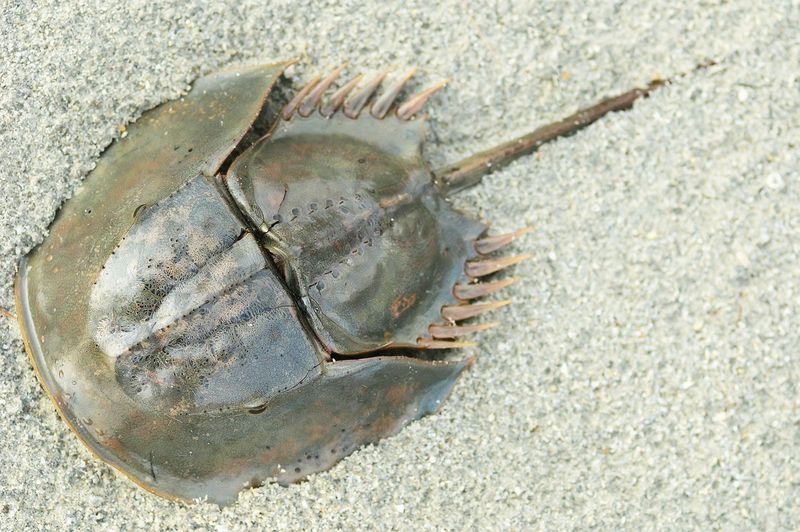
A living fossil, the mangrove horseshoe crab scuttles along the muddy floors of the mangroves. Feeding primarily on small invertebrates, it contributes significantly to the health of the ecosystem.
The horseshoe crab’s ancient design is a marvel, having survived virtually unchanged for millions of years. Its presence is a testament to the resilience and diversity of life within the mangroves.
Conservation of its habitat is crucial, as these creatures play a vital role in nutrient cycling and the overall health of the ecosystem.
24. Large-Spotted Civet
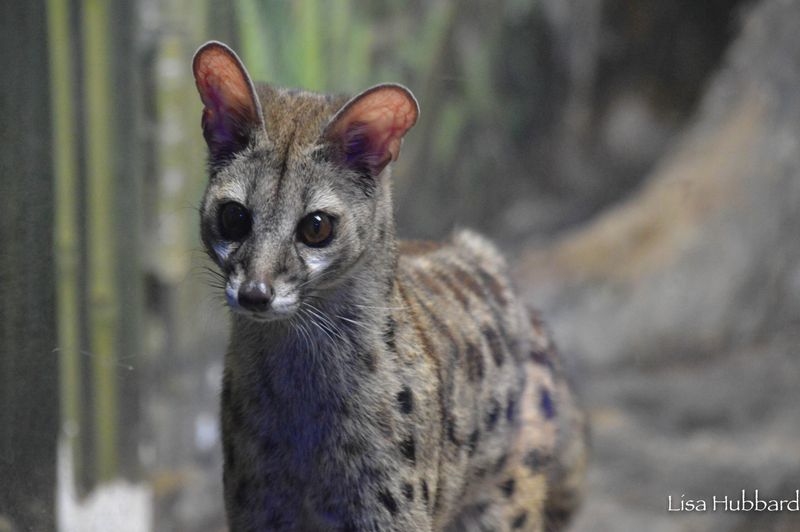
Under the cover of darkness, the large-spotted civet prowls the Cambodian mangroves.
Known for its striking coat, this nocturnal mammal is adept at hunting various prey, contributing to controlling pest populations.
The civet’s presence adds to the rich tapestry of life that thrives in the mangrove ecosystem. Its role as a predator helps maintain balance, preventing any single species from dominating.
Observing the civet in its natural habitat is a rare and exciting experience, highlighting the diversity of life in the mangroves.
25. Mudskipper Fish

Hopping along the mudflats with its fins, the mudskipper fish is a fascinating resident of the mangroves. Its ability to live both in water and on land is a remarkable adaptation to the intertidal zones.
Mudskippers play a role in the ecosystem by feeding on detritus and small invertebrates, contributing to nutrient cycling.
Their presence is a testament to the unique adaptations that have evolved in the challenging conditions of the mangrove environment. Watching a mudskipper is like witnessing evolution in action.
26. Silver Leaf Monkey
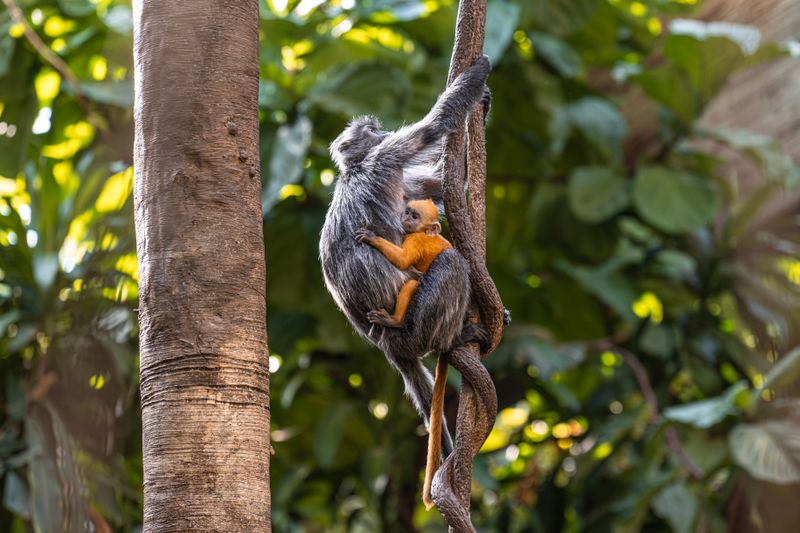
The Silver Leaf Monkey is an agile primate found throughout Southeast Asia’s mangroves.
These monkeys are recognized by their silvery-grey fur and expressive faces. They primarily feed on leaves, fruits, and flowers found in the mangrove forests.
Social creatures by nature, Silver Leaf Monkeys live in groups, often led by a dominant male. They play a vital role in seed dispersal, ensuring the healthy regeneration of mangrove flora.
27. Mud Lobster
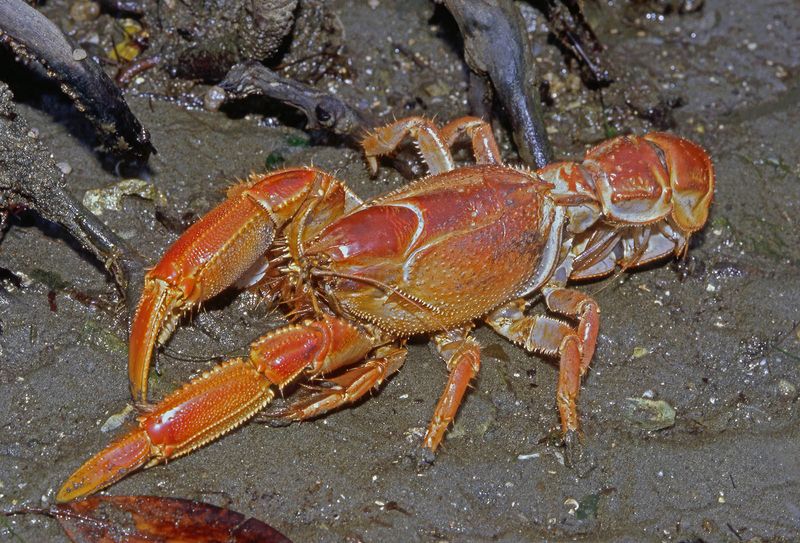
Mud Lobsters are fascinating creatures often found in mangrove swamps.
They are known for their burrowing habits, which create mounds called mud castles. These structures can significantly alter the landscape of the mangrove forest.
The burrows of the Mud Lobster allow oxygen to penetrate the otherwise anaerobic soil, supporting the growth of mangrove trees.
These lobsters contribute to the ecosystem by promoting soil aeration and nutrient recycling.

